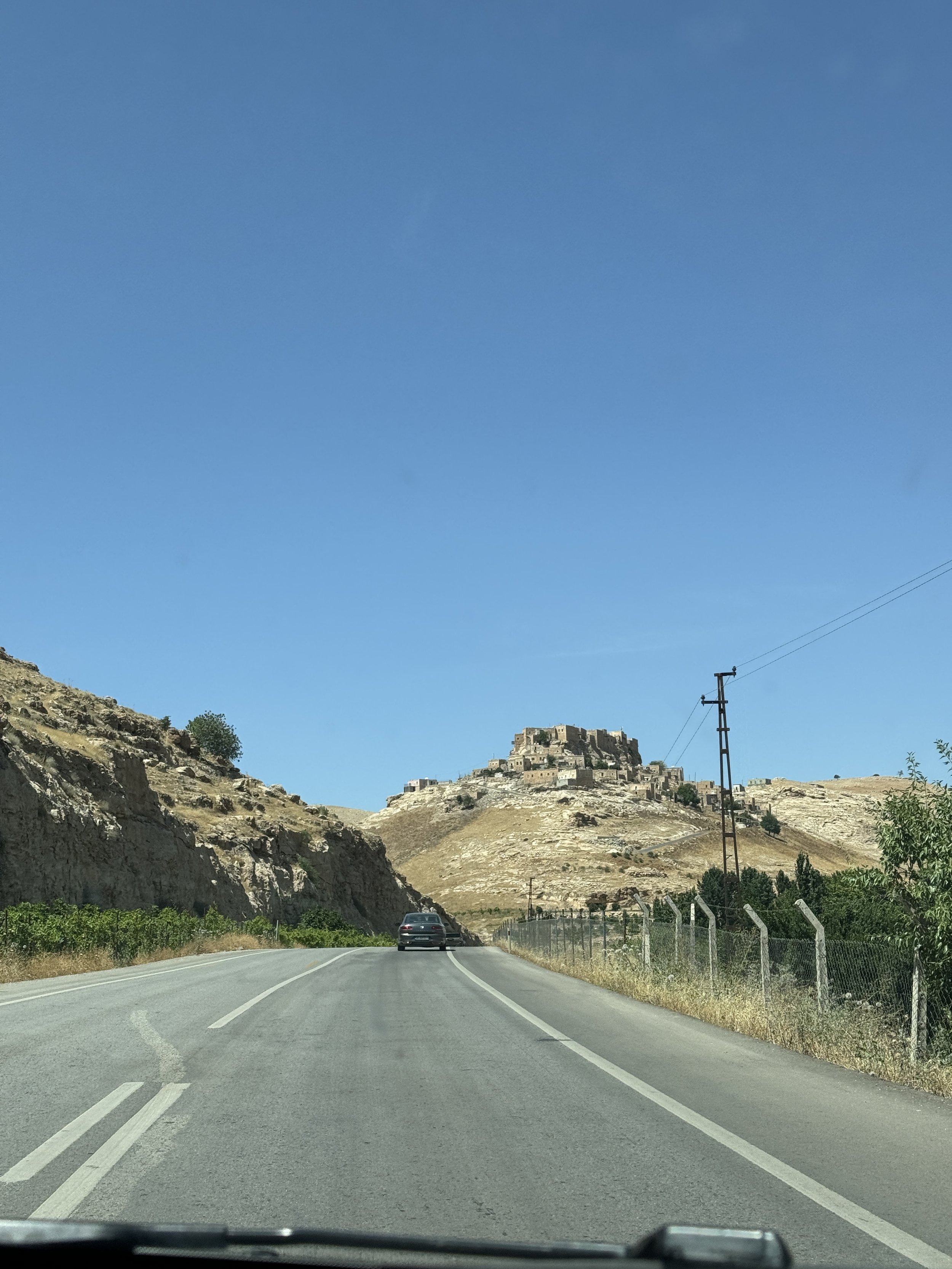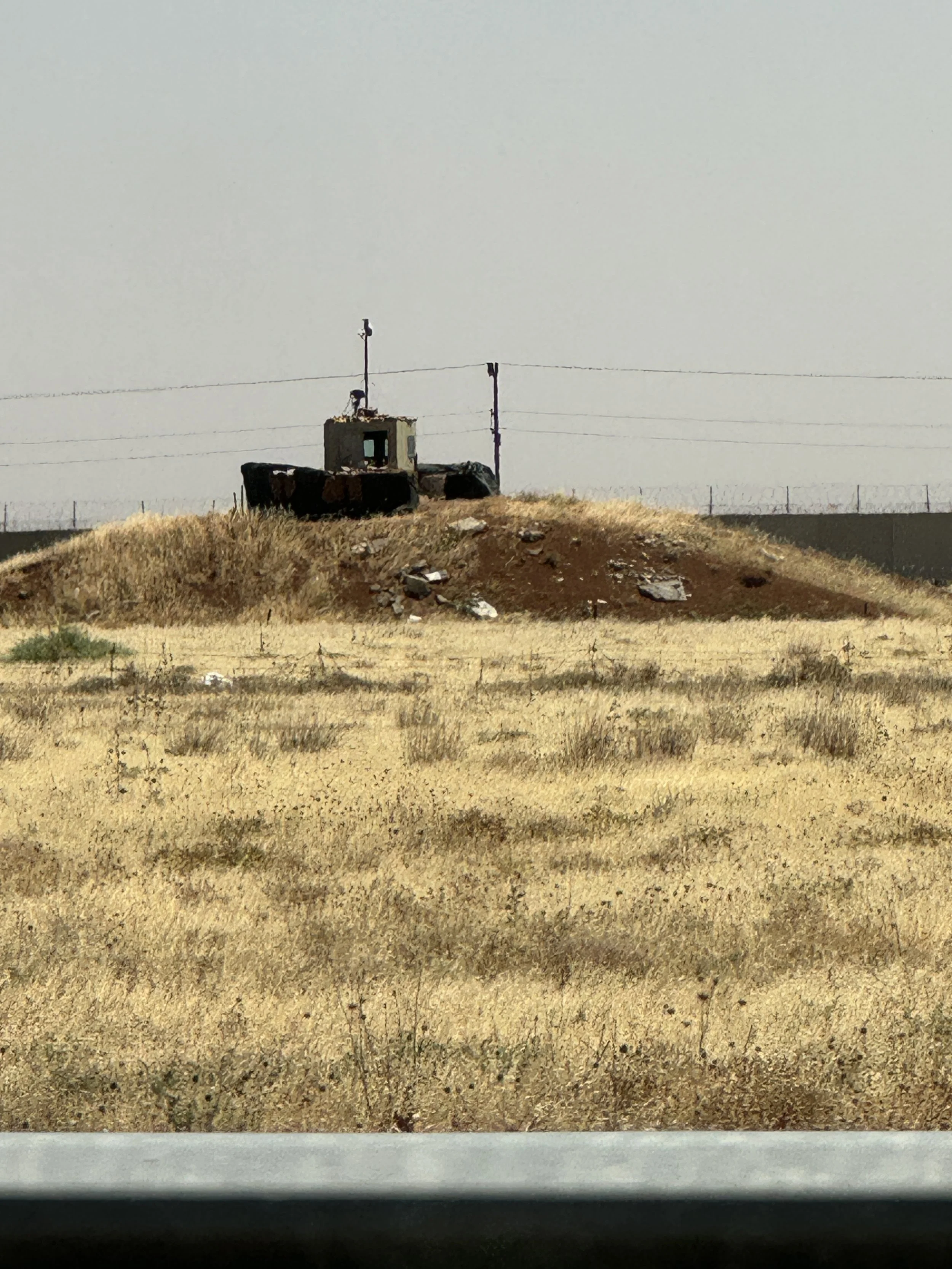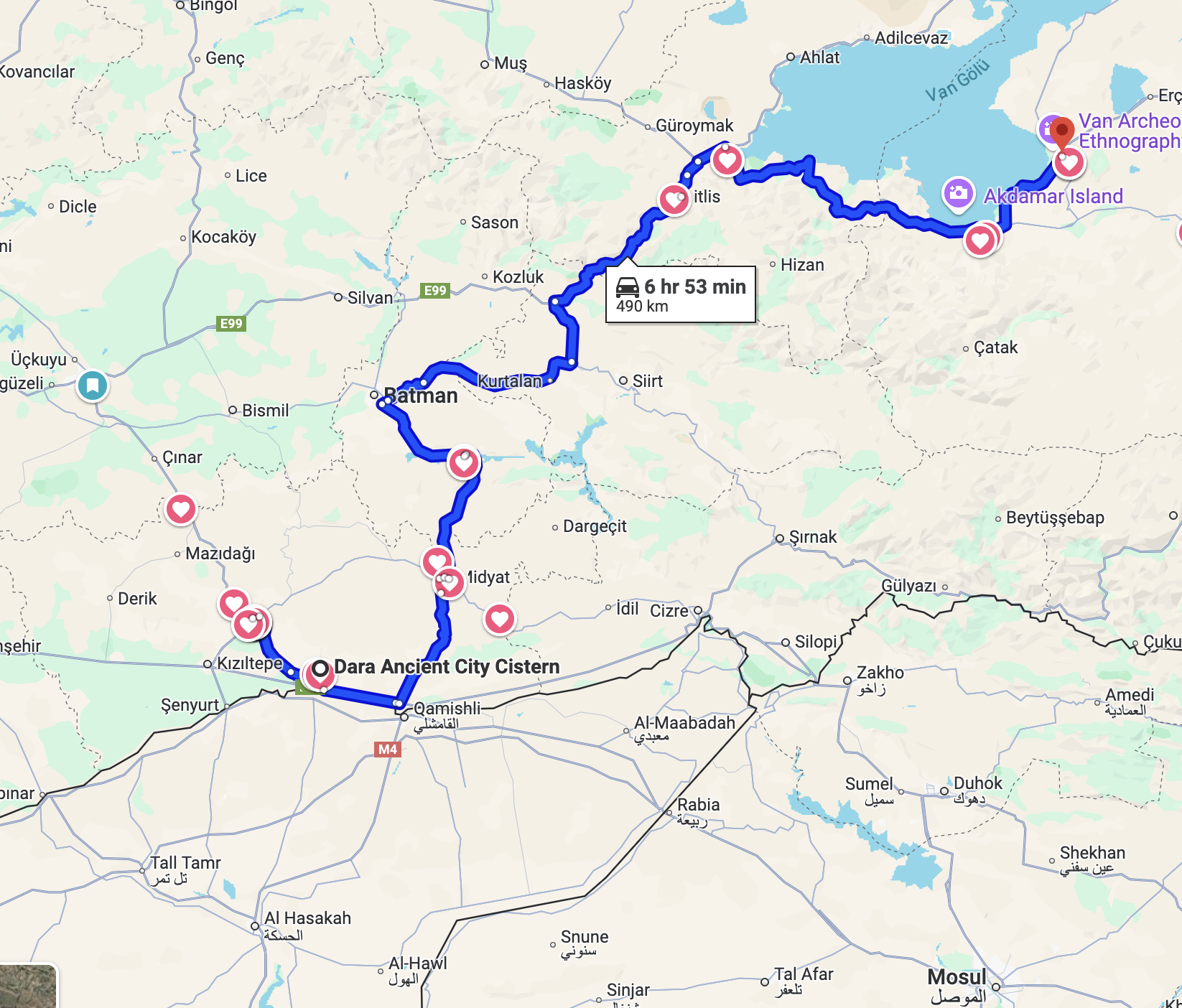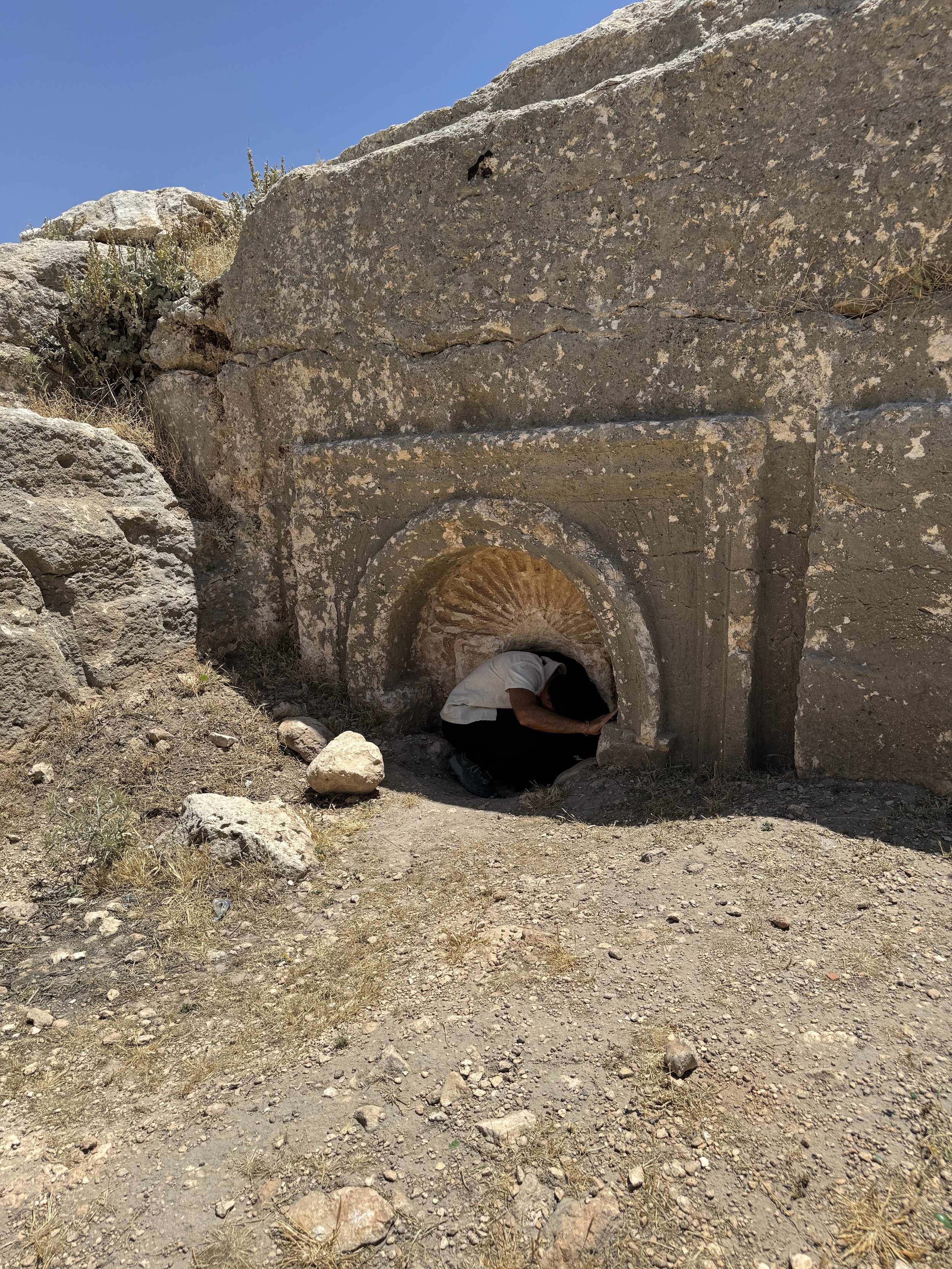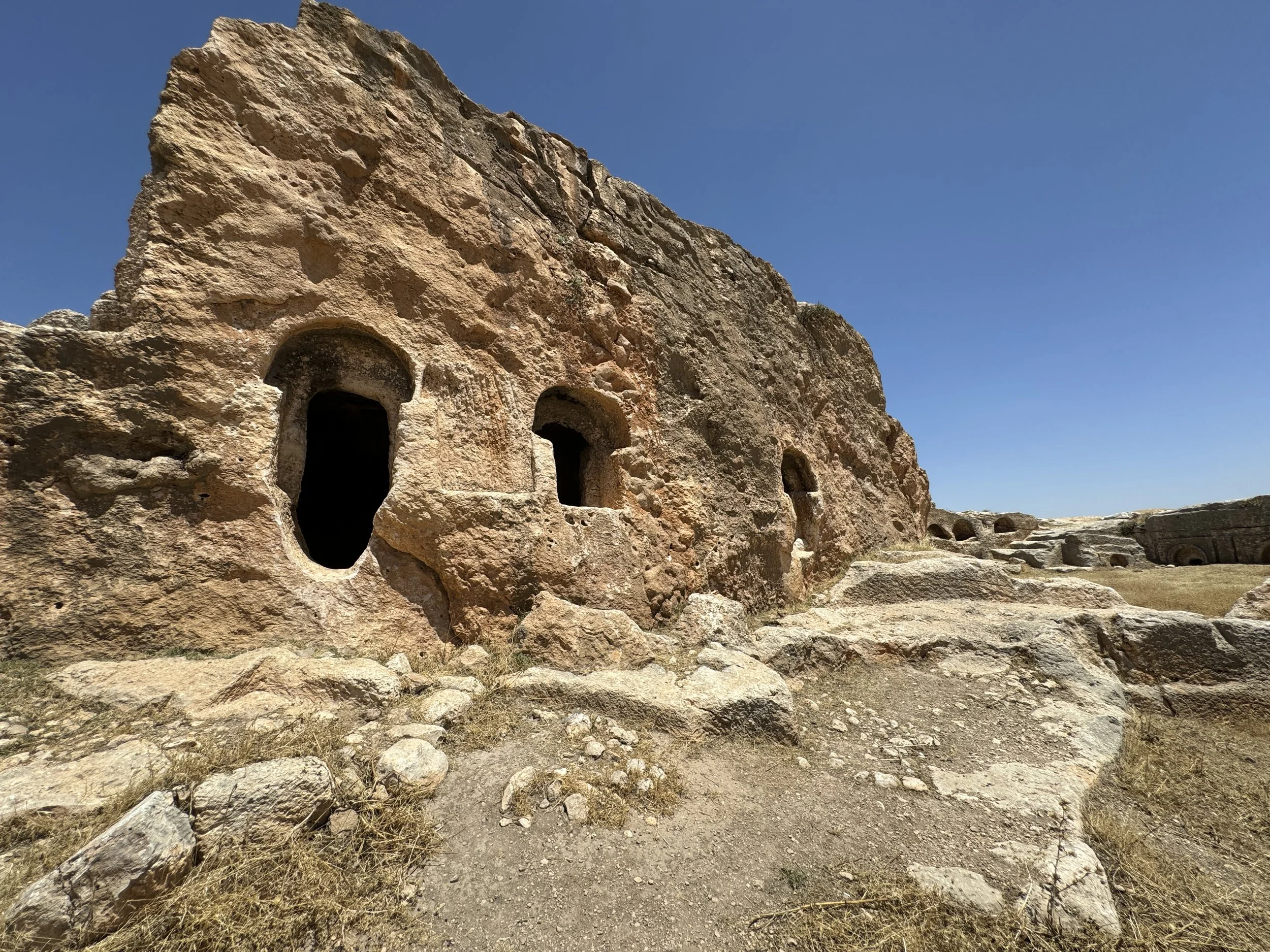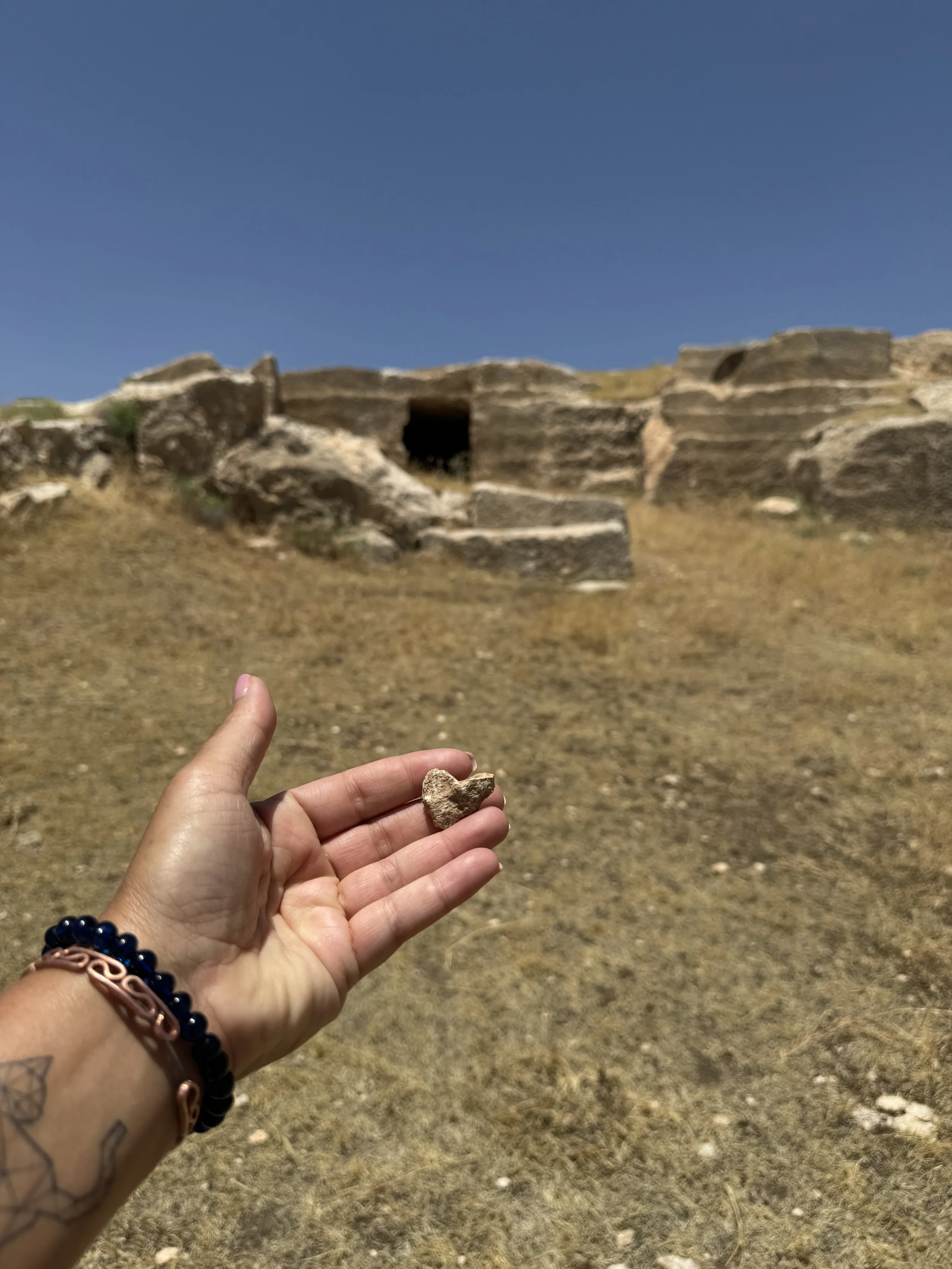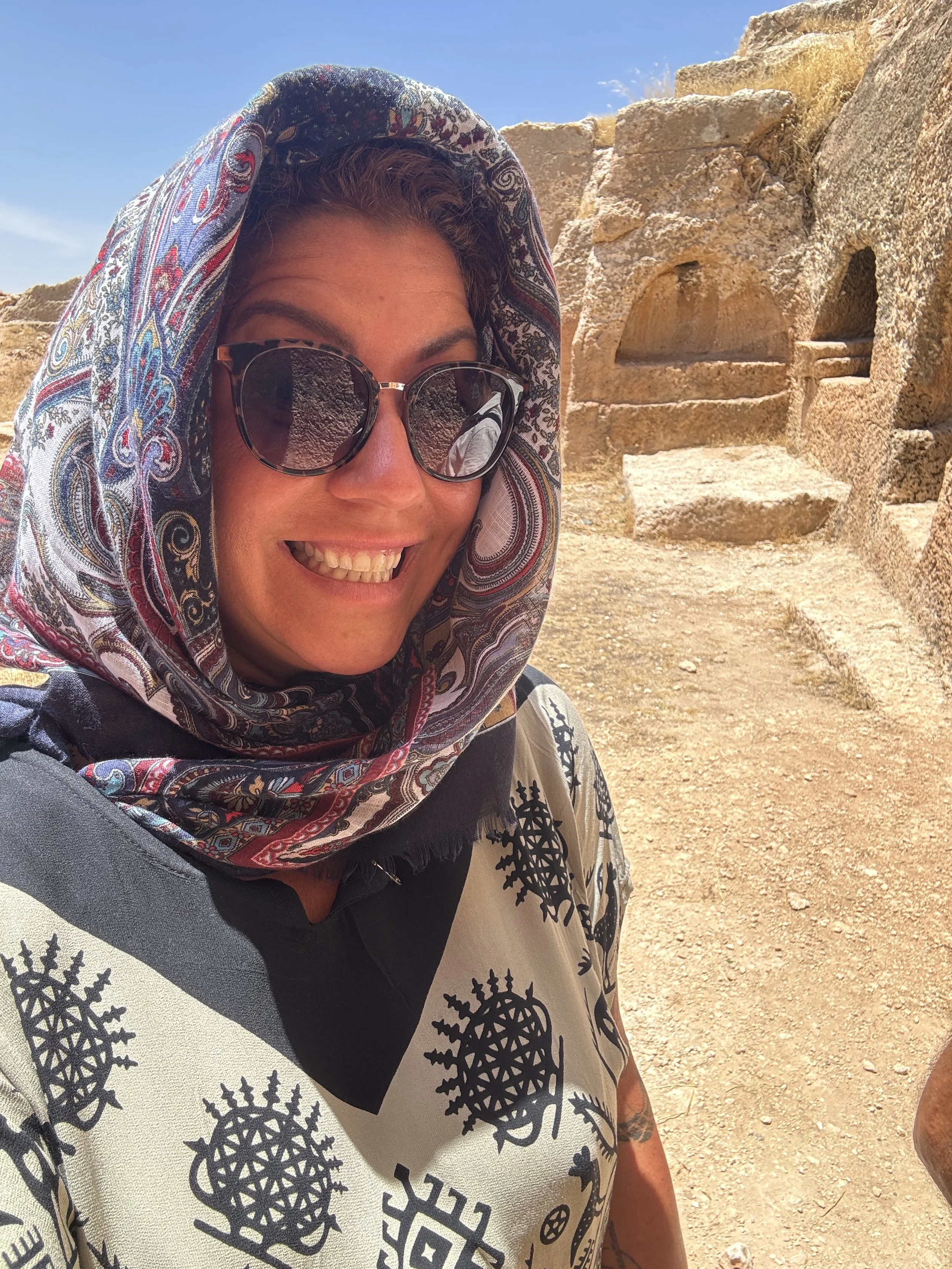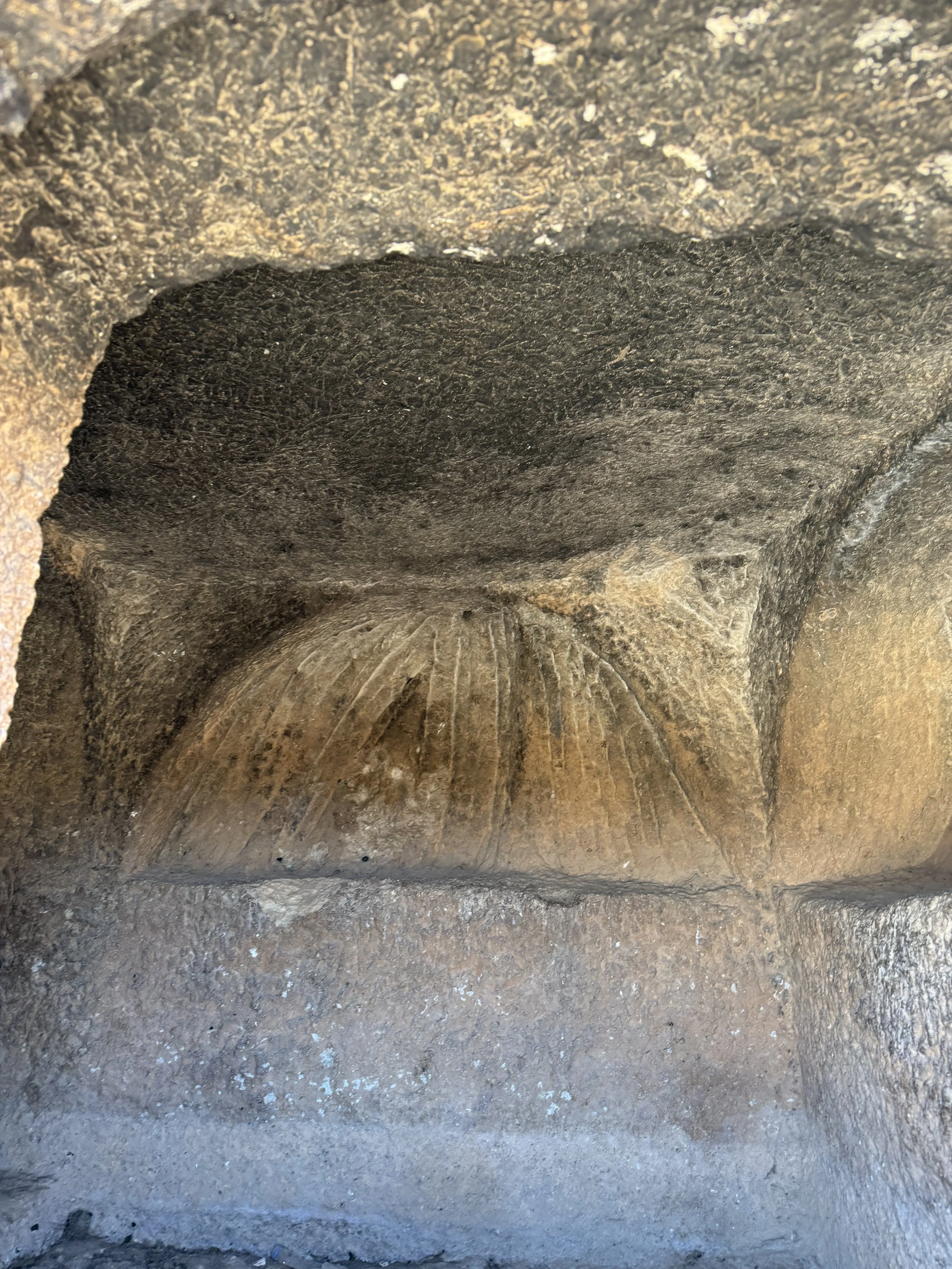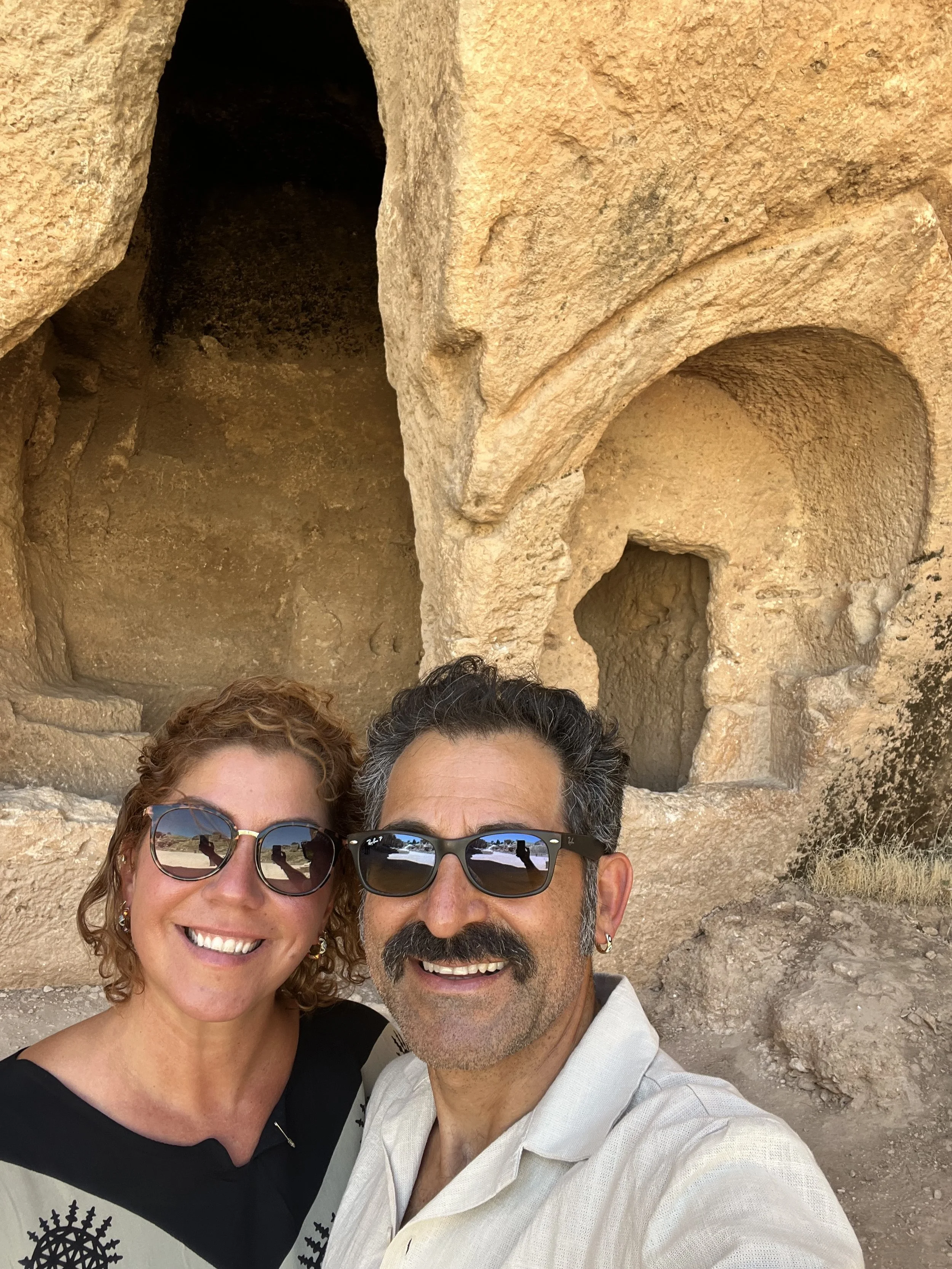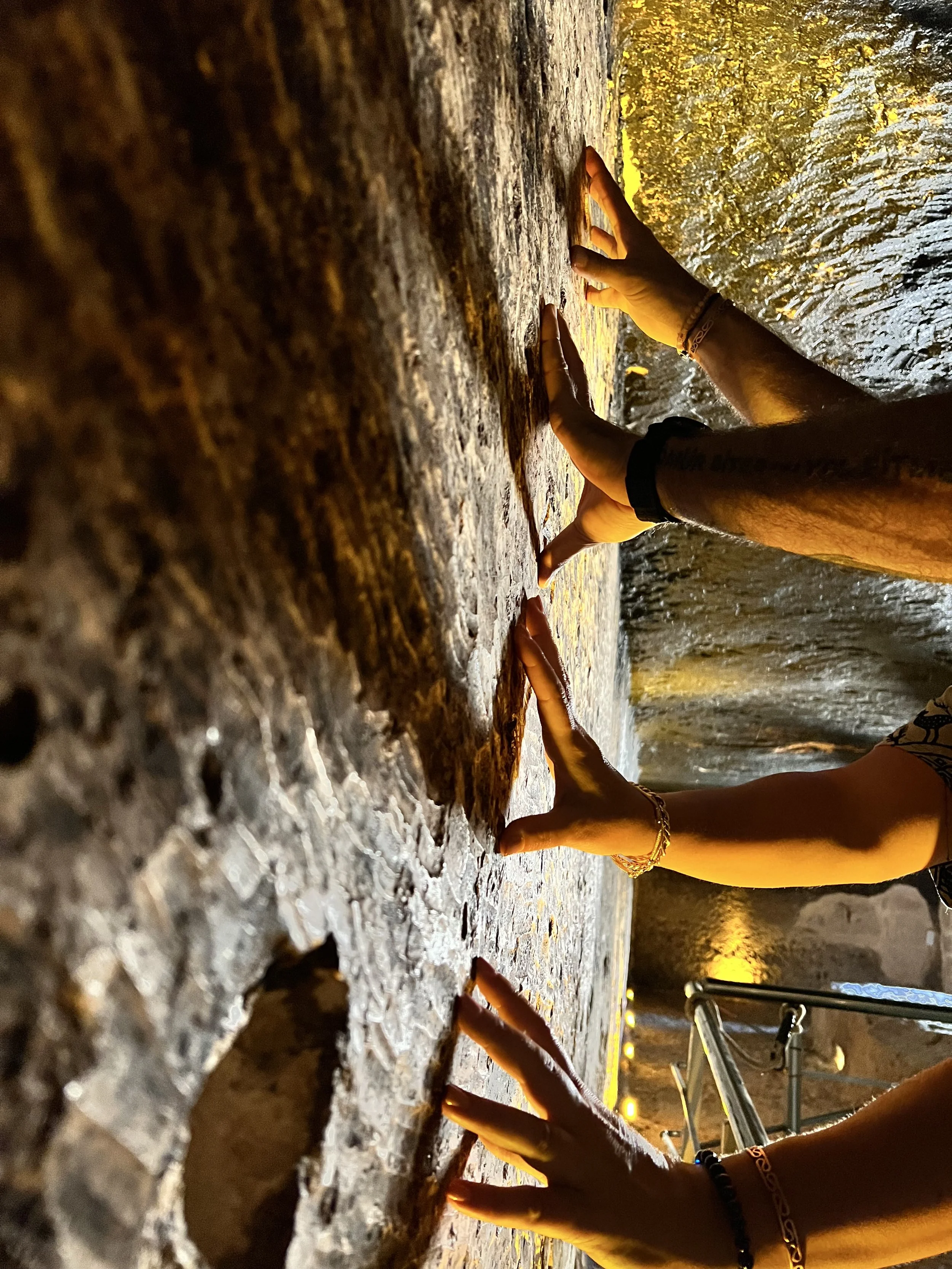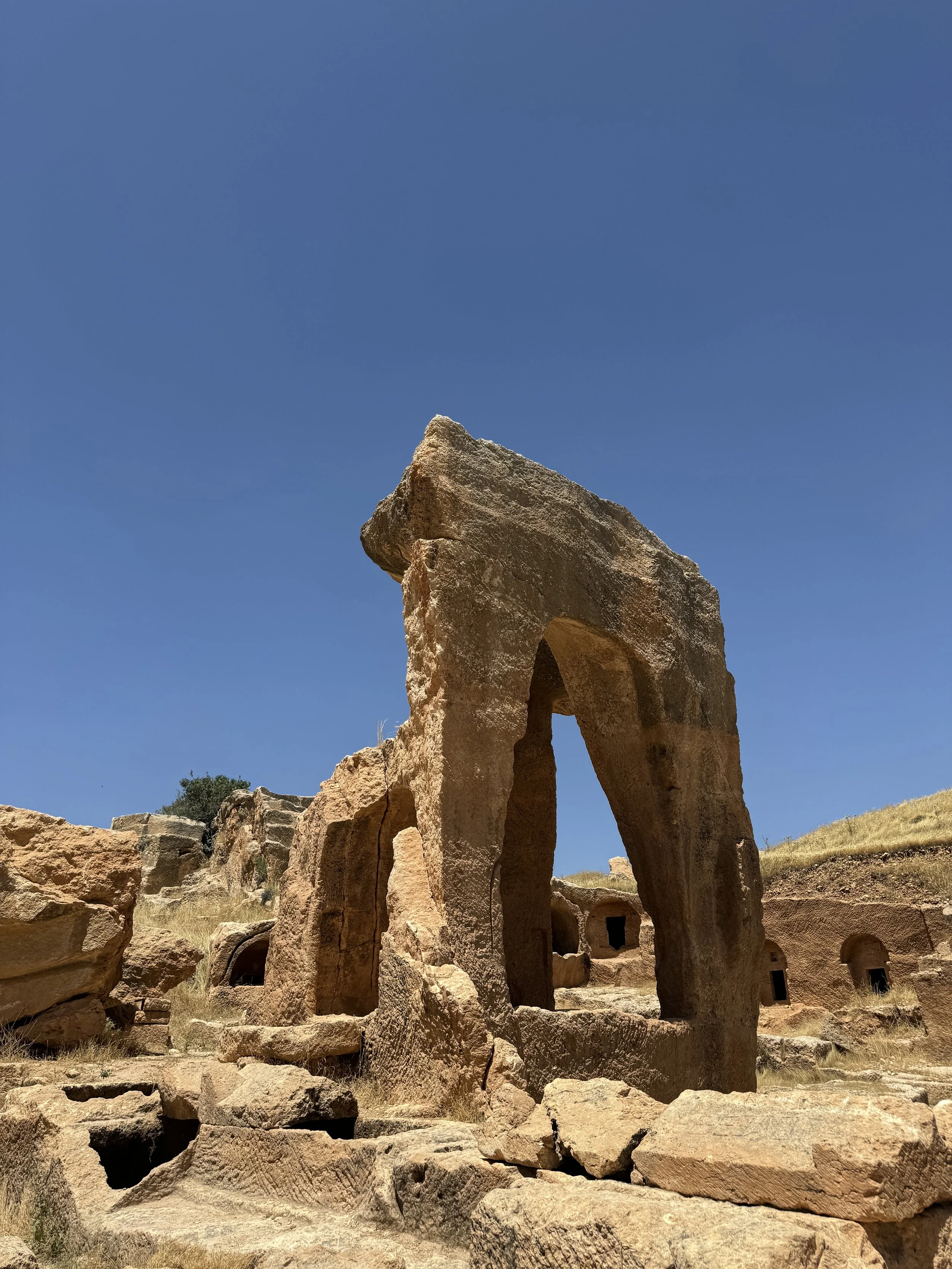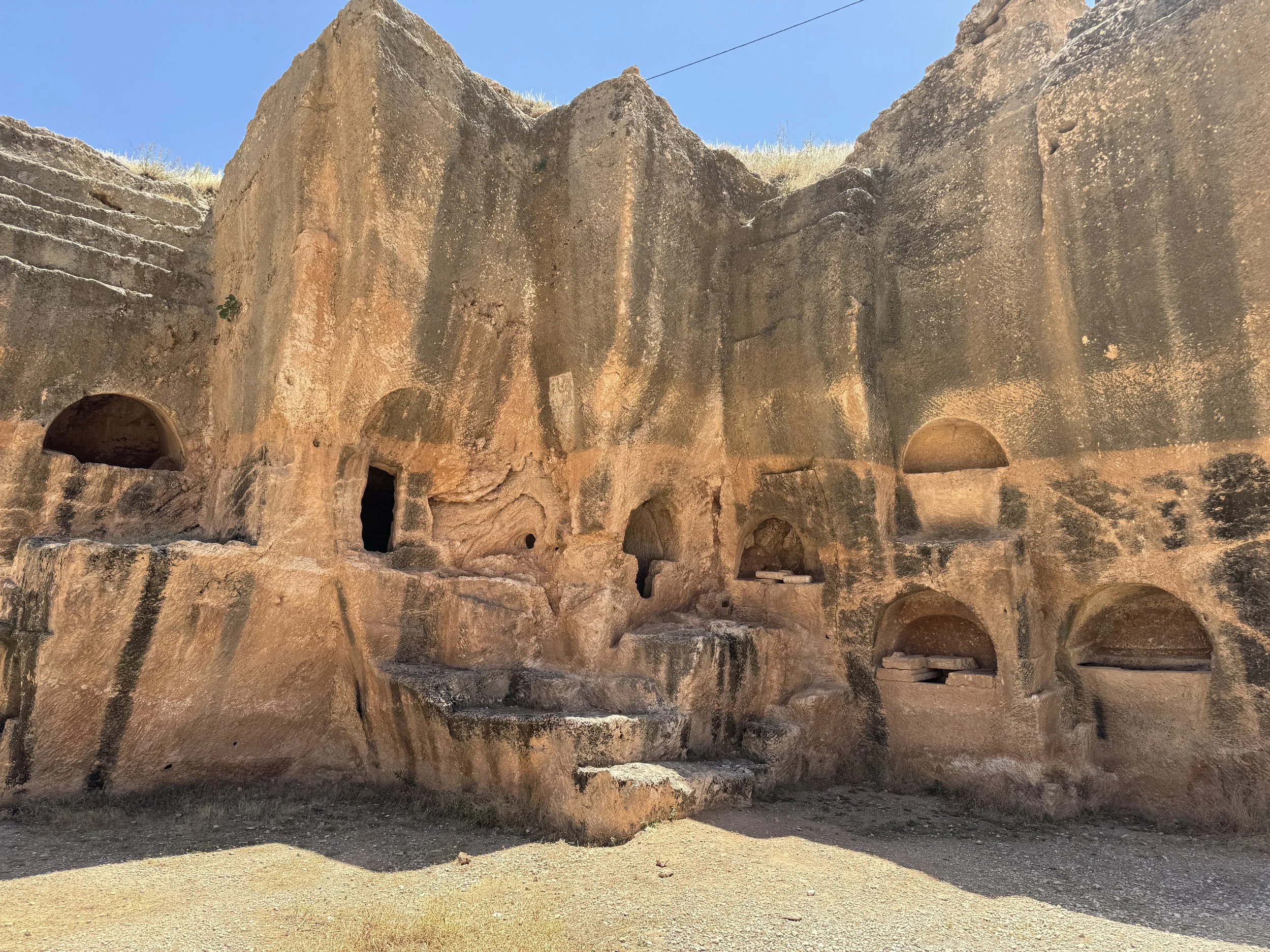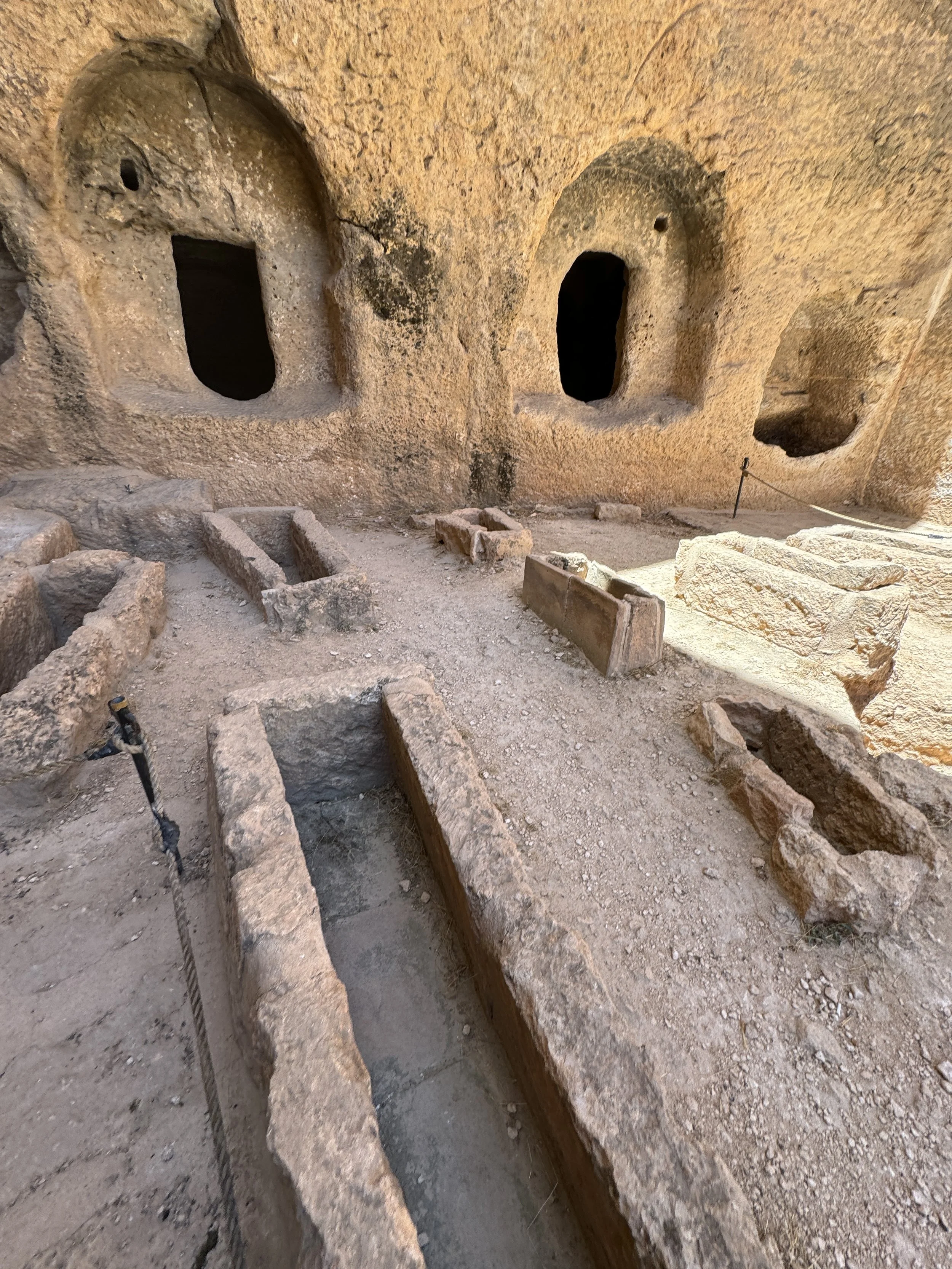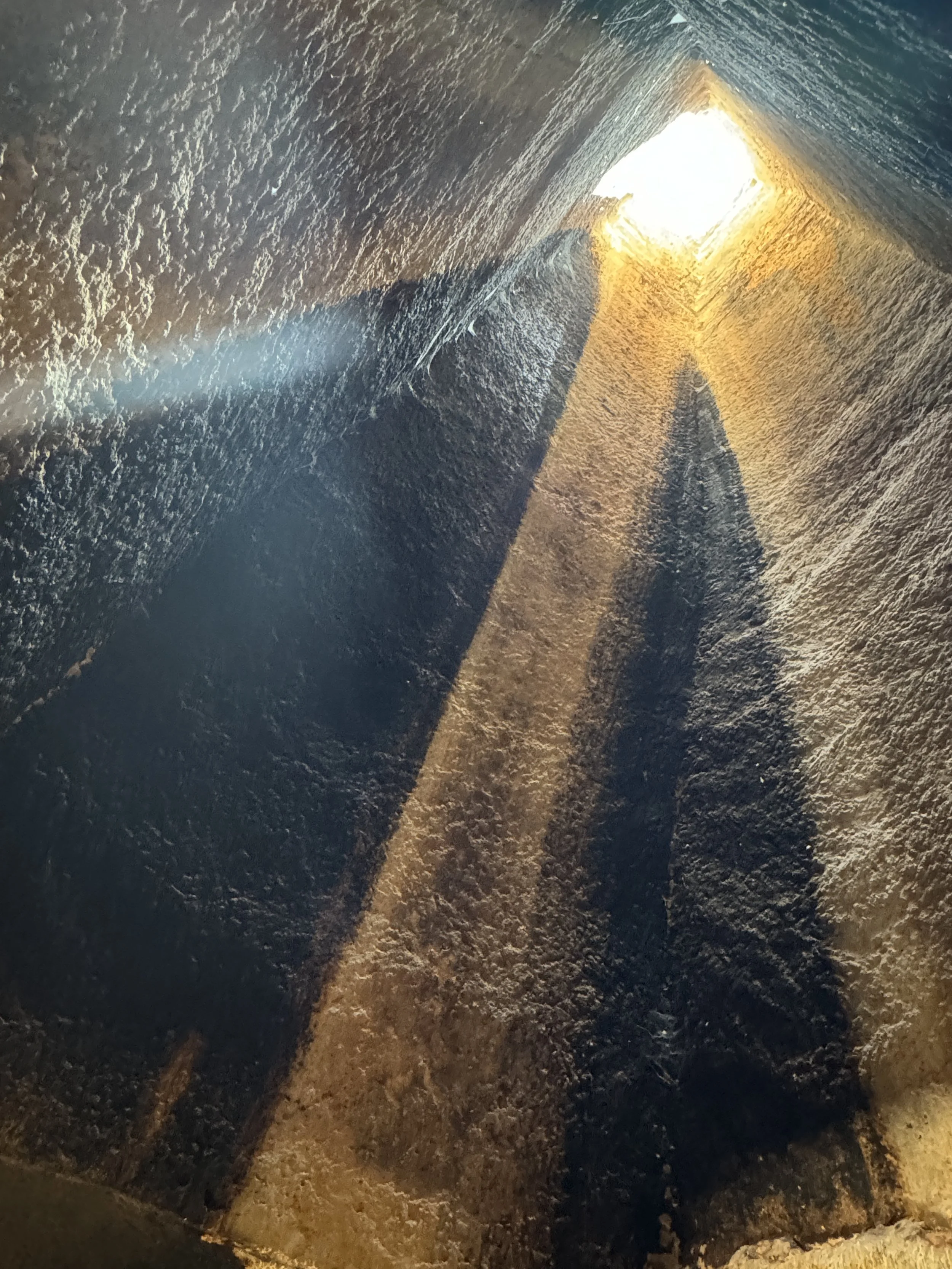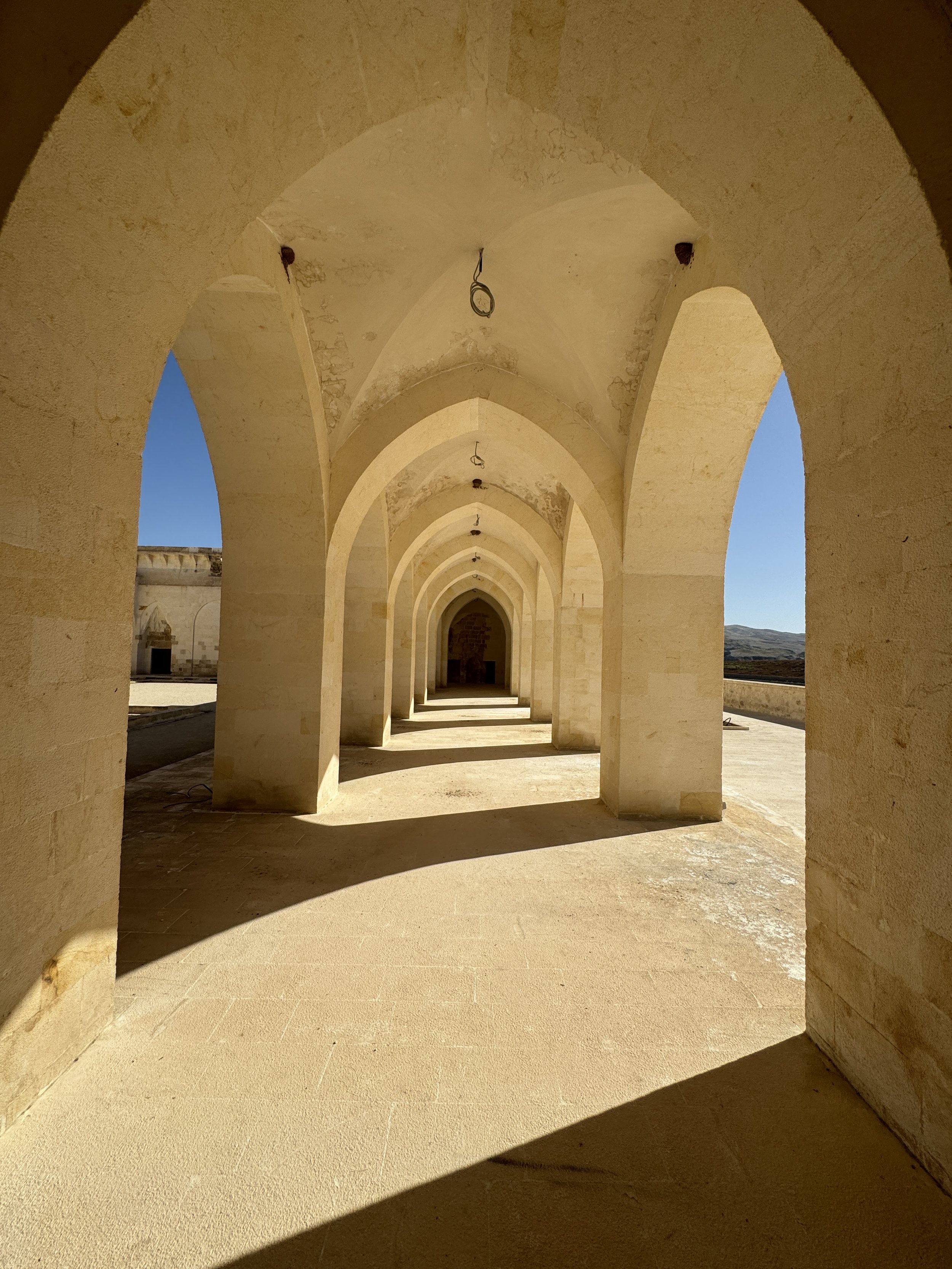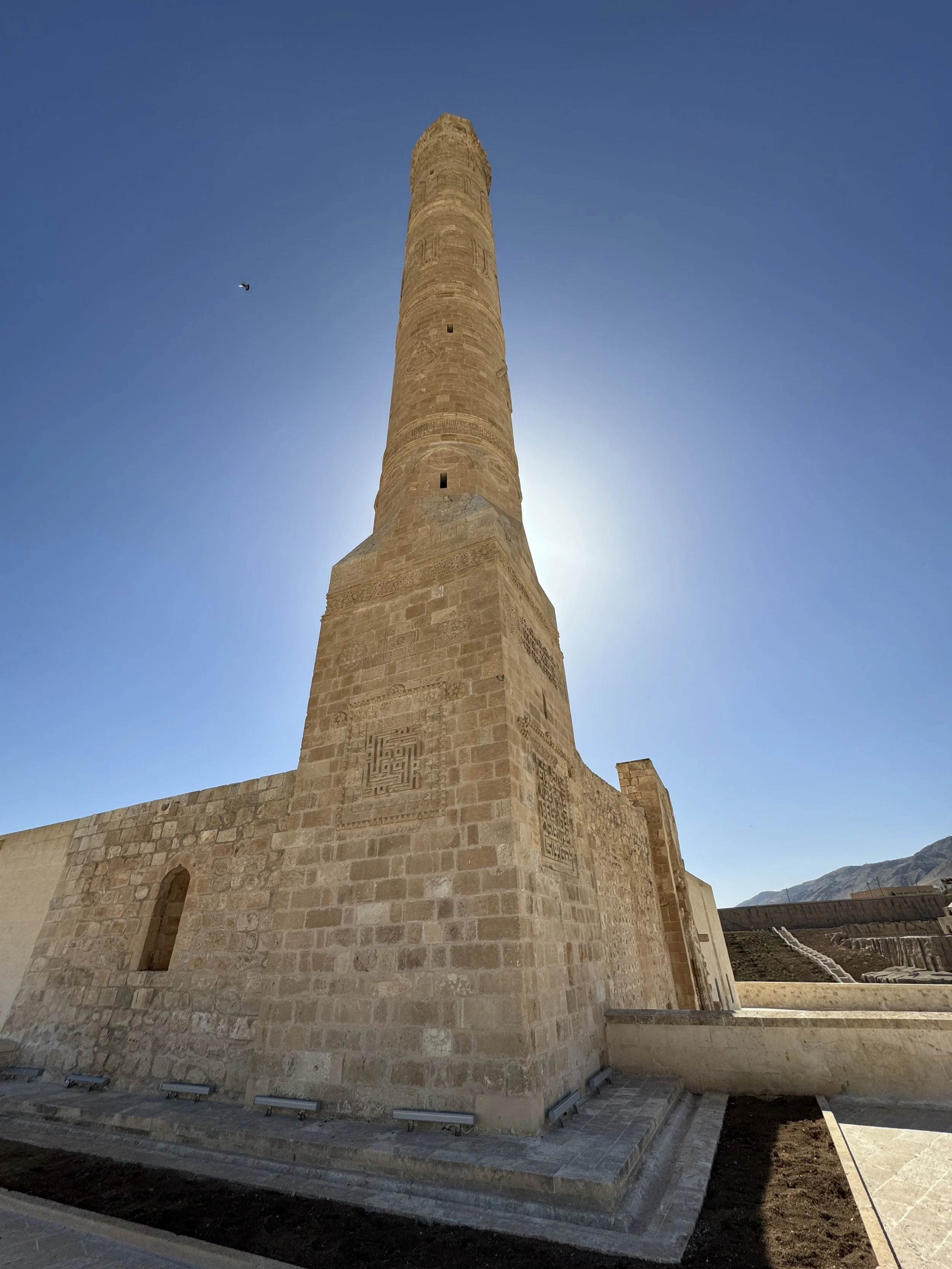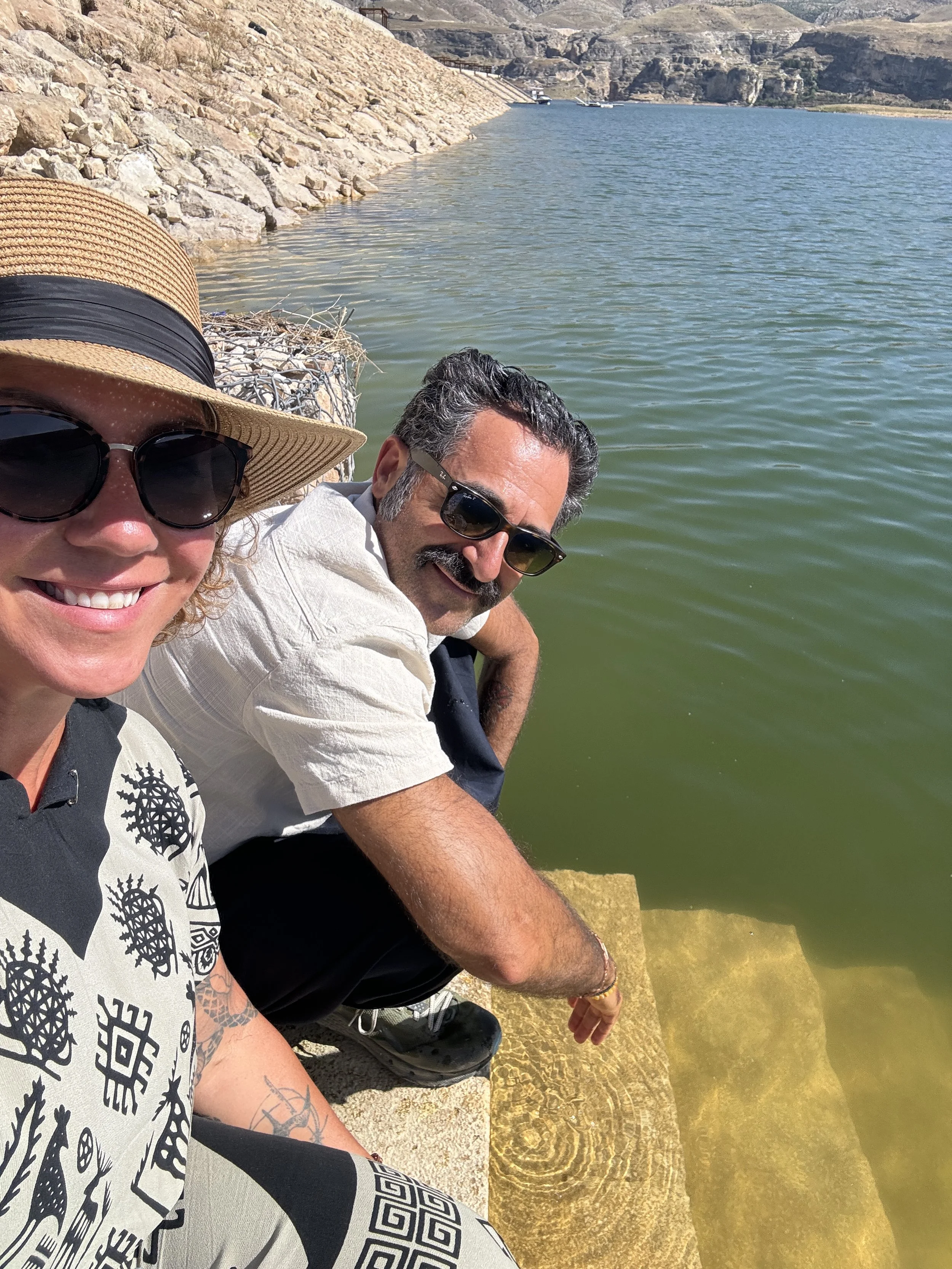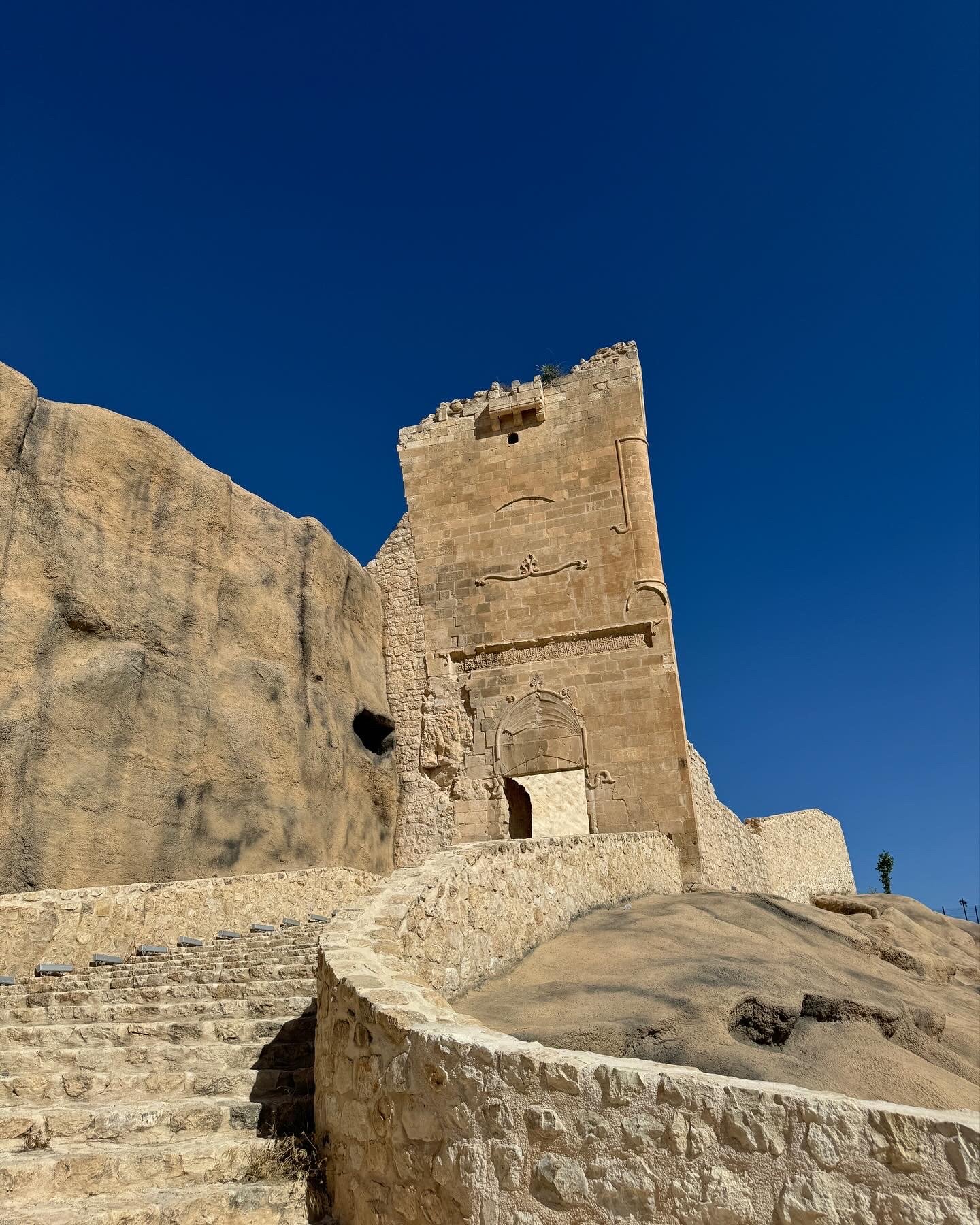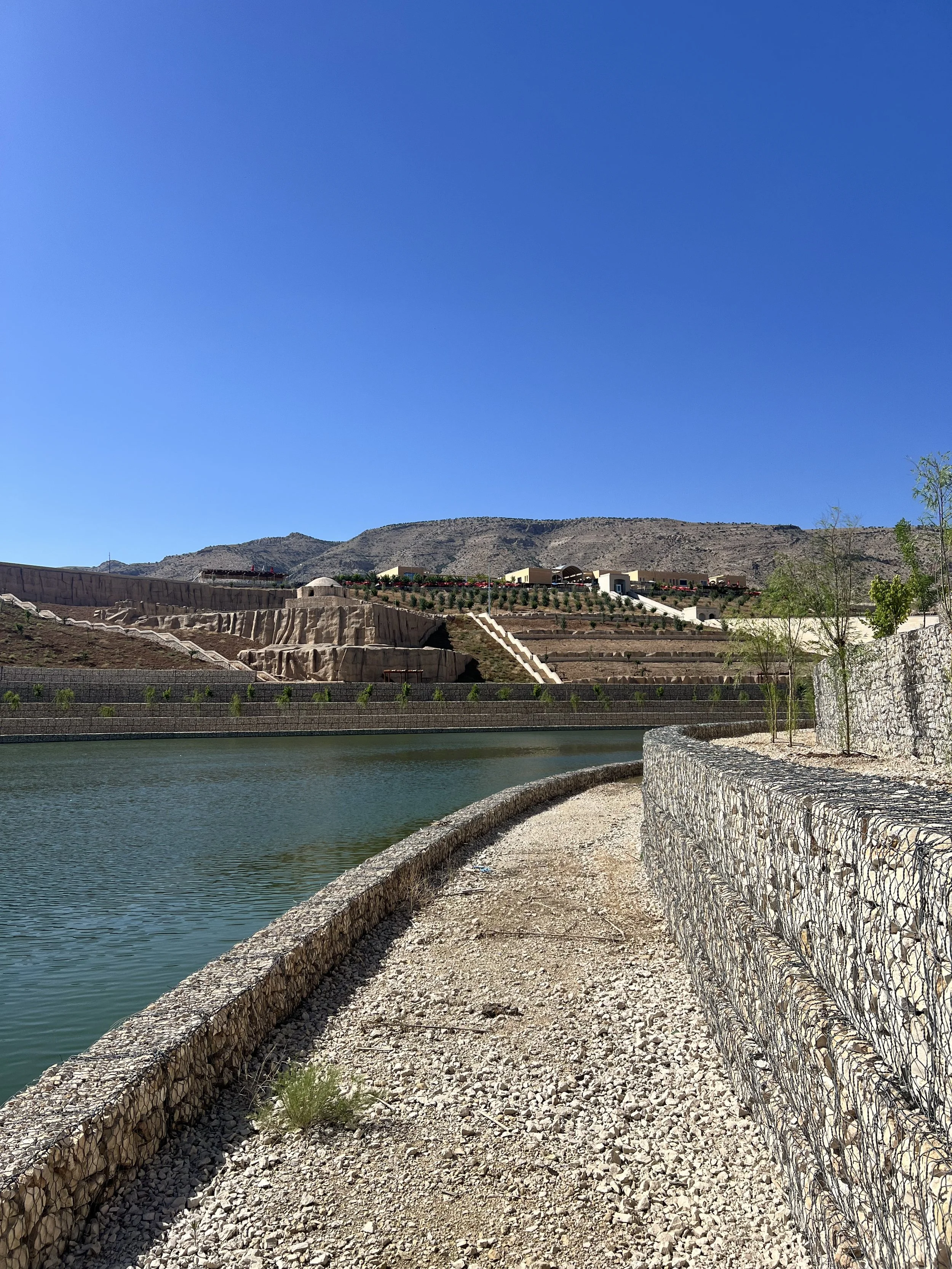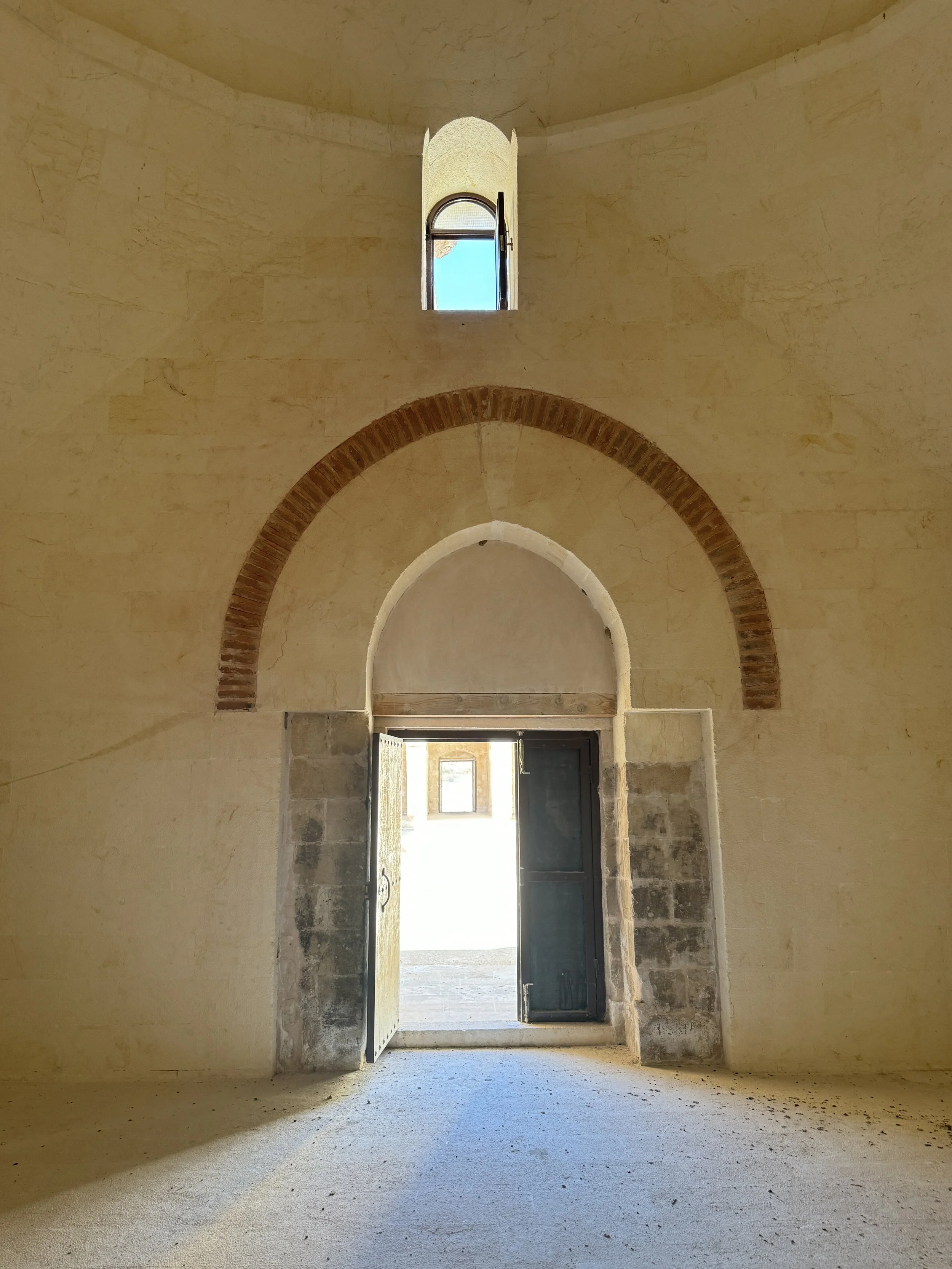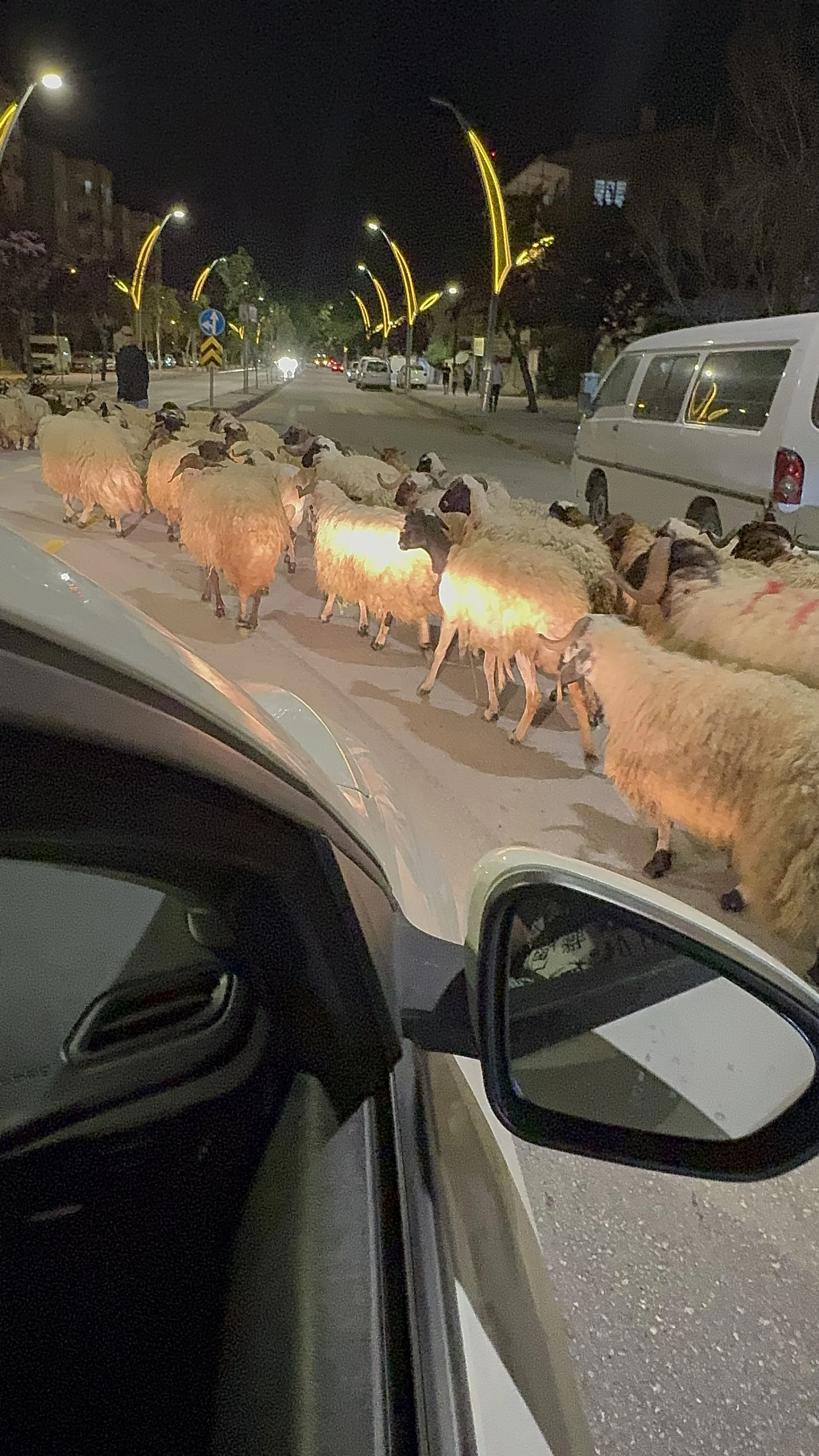Türkiye - Day 9: The Ancient City of Dara
The Beauty of Hasankeyf, The Tigris River and the Long Drive to Van
We left Mardin in the morning as the sun was beginning to turn up the heat from warm to oppressive. Today would be a long haul - from the magical city of Mardin along the southern border with Syria up to the far east to Lake Van. The Syrian-Turkish border stretches approximately 822 kilometers (511 miles) and is known as a hotspot for instability. It has seen the movement of refugees, smuggling, and, at times, the presence of armed groups, including ISIS and other factions involved in conflict. The barbed wire fencing stretches upwards and winds endlessly along the road. Tanks are stationed at frequent intervals and behind the initial fencing, there’s a 19-mile deep safety zone studded with watchtowers and tanks. It’s intimidating to say the least and as we roll through checkpoints, guards are increasingly confused about what we’re doing and why we’re there. No one wants to get tangled up with diplomatic complexities of a light haired American and we’re waved through after our documents are recorded. The checkpoints serve as a way to track movement through the country in case something goes awry. Their diligence is reassuring but the need for it is troubling. Safety trumps privacy in places like this, and for good reason.
From Mardin, along the Syrian border to Dara, up to Batman, across the Tigris and east to Lake Van.
The Ancient City of Dara
While the Ancient City of Dara is out of our way, I can’t help but add it to our itinerary. After miles of nothing we see the shape of structures - rocks, a building, a little convenience store-shack. An empty parking lot waits for us and a little girl kicks a rock around crumbled asphalt. It’s over 120ºF / 49ªC and she’s out here, hot wind whipping her black hair across her face. She spied us coming long before we saw here, assuredly. She’s at the door offering us a tour in exchange for a few lira. We decline but give her a few lira and sweets from Mardin anyways.
We are in the area before the main destination with the alanı (shops/services/tours). We walk freely around ancient ruins. The caves, like elsewhere in Türkiye are noticeably cool - even on a blistering hot day like today. Z wants to go check out what’s over a little hill and I tell him I’m going to stay in the shade and wander in this small grassy alcove created by caves. I stand there and realize I have no keys, no phone (I handed it to him when we were climbing over rocks), and no money. I have nothing. I am in the middle of nowhere in a not-super-safe area completely alone. If anything happens to Z, I am in a serious jam. I feel panic welling up inside, I know way better than this. This is so stupid. How could I possibly be so negligent with my own safety? I yell out for Z and hear my voice echo back. The pitch black mouths of caves stare back at me, my voice sounding through the emptiness. I begin to climb up the hill to see if I can get my voice further and listen back for Z. Time is moving too slowly, the heat is oppressive and my fingertips prickle with adrenaline. So stupid. What if I’m not alone? What now?
Fortunately Z comes back over the rise and I share my panic - we have to be smarter - we are way too far out to take such needless chances.
We move on towards the main attraction and are greeted with a parking area with more flair - ice cream sellers call out to us in their traditional garb and we pay a small fee for entry to the gated park. The ruins here are stunning. Dara dates back to the 5th century CE during the Byzantine Empire. It was a key military outpost on the Roman-Persian frontier, established by Emperor Anastasius I as part of efforts to fortify the region against the Sassanid Empire. It was a hub of trade and defense, featuring massive city walls, an ancient rock-cut necropolis with tombs carved into the cliffs and massive underground cisterns showcase advanced Roman engineering. It had to be incredibly majestic in it’s day - it’s mind blowing to imagine these places bustling with activity and trade.
The Tigris River + Hasankeyf
One of the two great rivers of Mesopotamia (along with the Euphrates), the Tigris has been a cradle of civilization for millennia, supporting ancient cultures like the Sumerians, Assyrians, and Babylonians. It flows through southeastern Türkiye, Iraq, and into the Persian Gulf, and its fertile banks have nurtured human settlements for centuries. Crossing these legendary rivers and driving along their winding banks was more impactful than I had imagined. The Euphrates and the Tigris were central to these areas thriving and surviving. We decide to stop at Hasankeyf and walk down to the Tigris. Hasankeyf, perched on the banks of the Tigris, is an ancient city with a history spanning 12,000 years, making it one of the oldest continuously inhabited settlements in the world. It was a vital stop along the Silk Road, Hasankeyf has been influenced by Romans, Byzantines, Artuqids, and Ottomans.
Unfortunately much of Hasankeyf was submerged under water due to the construction of the Ilisu Dam on the Tigris River in 2020. Some historical structures were either lost or relocated to a "new Hasankeyf" archaeological park to preserve them, others thrive in all their glory. This whole area was simply stunning. We parked our car and walked down to the Tigris. It’s calm, quiet, peaceful. The river flows gently by us like it has for millenia - regardless of who was sitting by it’s banks. Across the river we can see old structures and cave-homes. There is a timelessness here that is inspiring. How many kings and queens sat here? How many artisans? Tradesmen? Sailors? Beggars? People looking for a better future? People running from the past. Ages and ages of humans before us have sailed up and down this river in pursuit of riches, joy, survival.
The mosque complex is incredibly quiet - it’s us and a handful of pigeons. We walk through incredibly smooth archways, under intricately carved fortifications and run our hands along smooth stone. Being in places like this alone gives you the space to feel the past in a way a crowd cannot. We return to the car filled with a sense of unexpected peace.
Onwards to Lake Van
We definitely got off track somewhere with our directions and wound up taking a country road through some of the most beautiful scenery we’ve traversed! It cost us time we didn’t have to spare as Z still works in the evenings, but we did get an incredible view of the Taurus Mountains. The landscape changes so much here - the harsh desert environment yields to incredibly rich soil (hence the name, the fertile valley) and is appropriately full of farms. Acre after acre of lush growth is nestled between increasingly steep peaks. The air is cooler as we climb, Lake Van is at 5300 feet elevation, making it a cool retreat for summer. Lake Van is also one of the deepest lakes in the world and as we begin to come around it’s winding banks - it’s absolutely jaw-dropping at sunset. We’re racing the clock a bit and we need to get to our Air BnB so we push through to our final destination.
Up next? A few days in Van resting from so much travel and then on to the magnificent Ani Ruins!!



